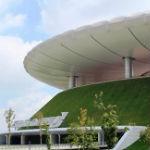 Spain. Researchers from the Polytechnic University of Madrid (UPM) and the Università Politecnica delle Marche (in Italy) have developed a numerical model with which they have managed to test the effects on the passive cooling of buildings caused by the variation in the density of vegetation of ecological roofs.
Spain. Researchers from the Polytechnic University of Madrid (UPM) and the Università Politecnica delle Marche (in Italy) have developed a numerical model with which they have managed to test the effects on the passive cooling of buildings caused by the variation in the density of vegetation of ecological roofs.
With only one error that varies between 5% and 7%, this model could be used to study the energy savings generated by these architectural elements. In the last 20 years there has been a growing interest in green roofs for their energy and environmental benefits, both at the urban level and at the building level. In fact, in recent years, many studies have dealt with these aspects, although the complexity of the phenomena associated with the thermo-physical behavior of green roofs means that an analysis model that can easily be integrated into the building design process has not yet been developed.
In the specific case of this research, the objectives set were threefold: to analyze the impact of vegetation density on the energy efficiency of a roof located in a coastal Mediterranean climate; develop a simplified numerical model to calculate the equivalent thermal resistance values of plants and substrate and validate the numerical model using experimental data.
The results show that when the density of vegetation is high, the heat entering the building through the roof is 60% lower than the heat that enters when there is no vegetation. In addition, it has been shown that the roof with a high density of vegetation acts as a passive cooling system; in fact, the energy that leaves the building through the roof during the summer exceeds by 9% the energy that enters during the same period.
Finally, it is shown that the numerical model developed has a good degree of approximation, since it reproduces the thermal behavior of the roof with an error that varies between 5% and 7%. This allows the model to be used to study the energy savings generated by vegetation covers in localities with a coastal Mediterranean climate.













